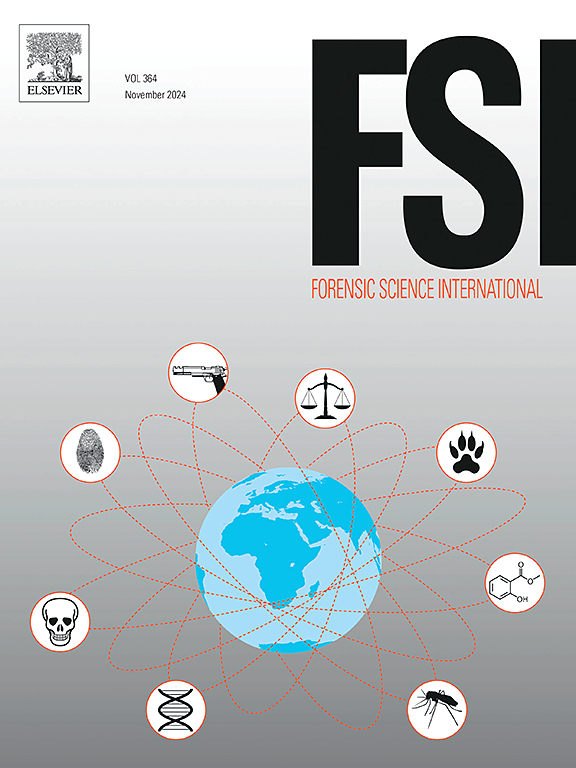Carbon and hydrogen isotope analysis of triacetone triperoxide using solid-phase microextraction coupled to GC-IRMS
IF 2.2
3区 医学
Q1 MEDICINE, LEGAL
引用次数: 0
Abstract
The source inference of triacetone triperoxide (TATP) is of great significance in the fight against crime. Isotope ratio mass spectrometry (IRMS) is a reliable method for accurately measuring the isotope ratio, and it has been successfully used to differentiate and trace various explosives, including TATP. However, the current studies are not suitable for analyzing trace amounts of TATP in complex matrices. The matrix at the explosion site is complex, with severe interference and low levels of explosive residues, which makes it difficult to extract the explosive residues. Therefore, an effective method for extracting and enriching TATP is necessary before conducting IRMS analysis. Solid-phase microextraction (SPME) is an efficient extraction technology that combines extraction, concentration and sample injection. In this study, SPME-gas chromatography-isotope ratio mass spectrometry (GC-IRMS) method based on isoreticular metal-organic framework-8 (IRMOF-8) coated fiber was established for the first time for the analysis of δ13C and δ2H signatures of TATP. The limits of detection of δ13C and δ2H signatures of TATP were 100 ng and 9 µg, respectively, with measurement errors of 0.36 ‰ and −3.75 ‰. The IRMOF-8-coated fiber exhibited better mechanical stability and a lower limit of detection compared to the commercial polydimethylsiloxane (PDMS) fiber. Using the established method, six TATP samples from different sources were distinguished accurately. The impact of matrix (soil and tap water) on δ13C and δ2H signatures of TATP was also investigated. The established method demonstrated high sensitivity and precision, making it suitable for in-situ extraction and source of trace explosive residues in explosion cases.
求助全文
约1分钟内获得全文
求助全文
来源期刊

Forensic science international
医学-医学:法
CiteScore
5.00
自引率
9.10%
发文量
285
审稿时长
49 days
期刊介绍:
Forensic Science International is the flagship journal in the prestigious Forensic Science International family, publishing the most innovative, cutting-edge, and influential contributions across the forensic sciences. Fields include: forensic pathology and histochemistry, chemistry, biochemistry and toxicology, biology, serology, odontology, psychiatry, anthropology, digital forensics, the physical sciences, firearms, and document examination, as well as investigations of value to public health in its broadest sense, and the important marginal area where science and medicine interact with the law.
The journal publishes:
Case Reports
Commentaries
Letters to the Editor
Original Research Papers (Regular Papers)
Rapid Communications
Review Articles
Technical Notes.
 求助内容:
求助内容: 应助结果提醒方式:
应助结果提醒方式:


